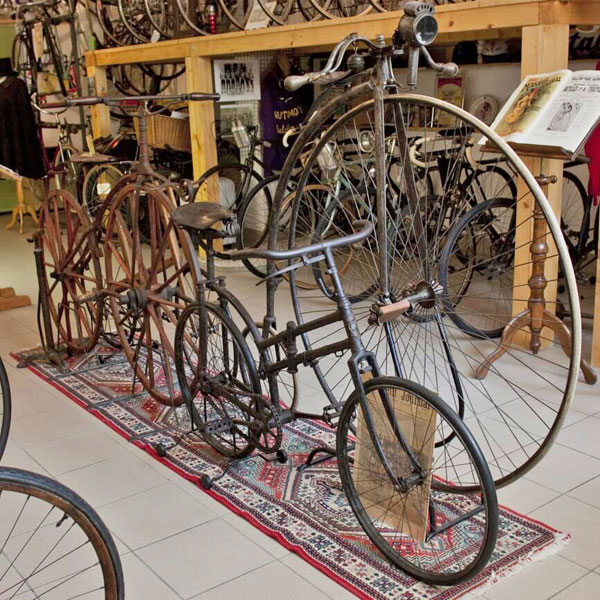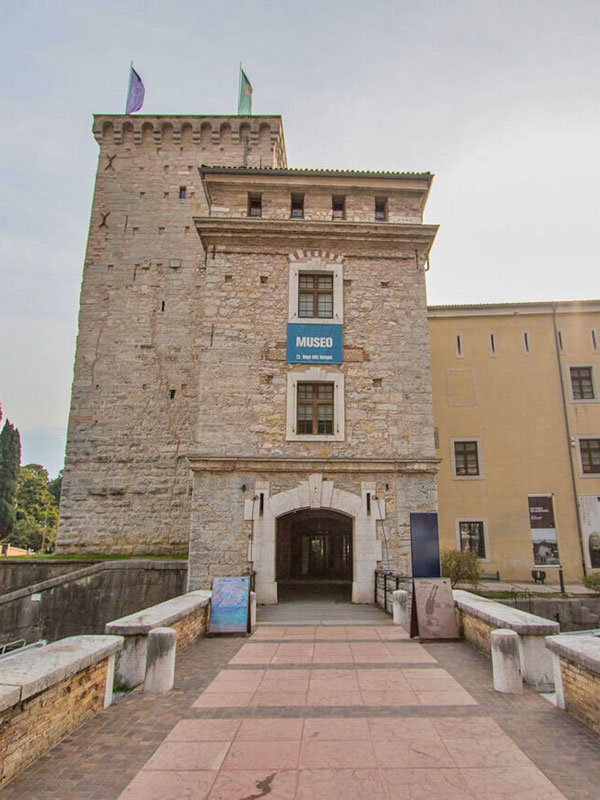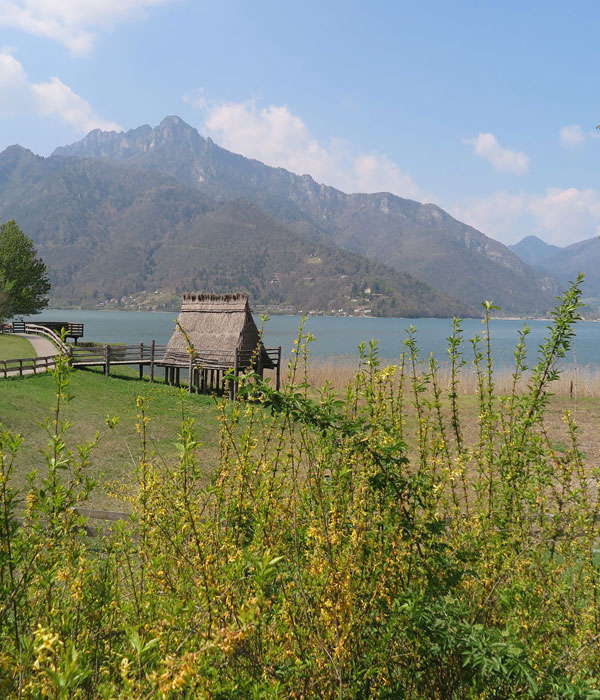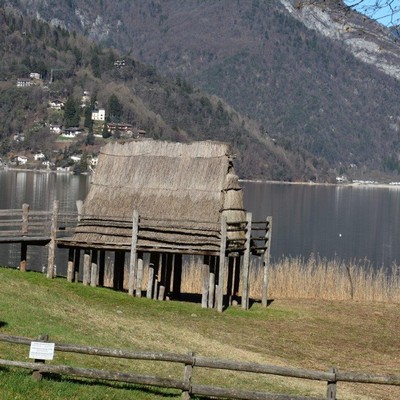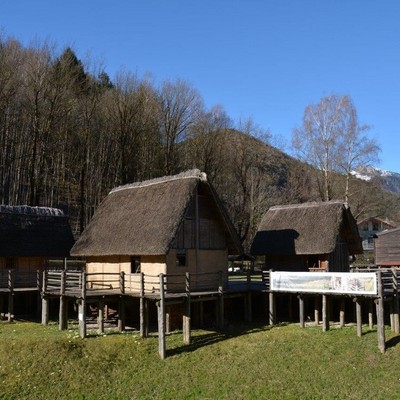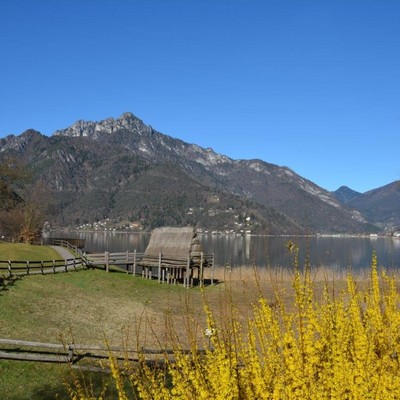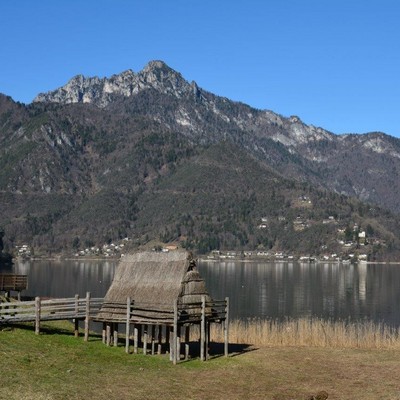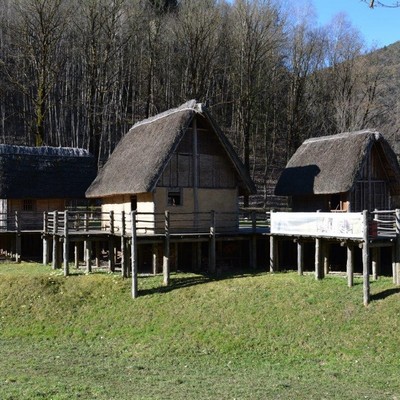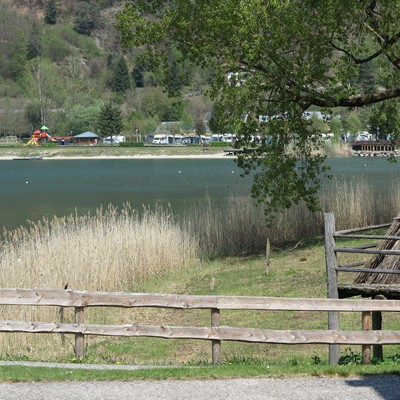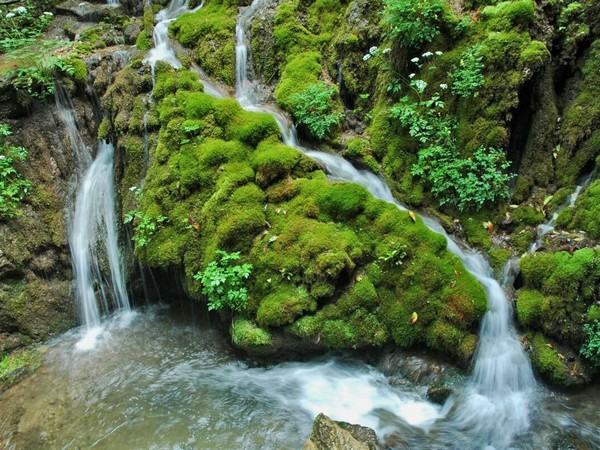Museum ciclocollection
In this little museum, people with a passion for bikes can find a collection of vintage bicycles. It is a fascinating in timeto look at the main events of the evolution of the bicycle, from the 'France Boneshaker Velocipide 1870' to the Racing bicycles which werw used during the heroic cycling period of Coppi and Bartali.
There are also on display many accessories and curios connected to the world of cycling. Among the bicycles on show visitors can admire the ordinary English Bicycle from 1880, the 1885 Rudge Hard Tire Safety, the Sparkbrook Trycycle also from 1885, the 1888 Columbia Chainless, Travelling Bicycles, Racing Bicycles, Children's Bicycles and Military Bicycles of unusual design and ingenious mechanisms.
This exhibition curated by Pierluigi Farè is an enchanting experience, it gives the visitor knowledge and understanding of a world that is unfortunately disappearing...
In questo piccolo Museum gli appassionati della bicicletta potranno visionare una collezione rara ed esclusiva (circa 100 biciclette) di due ruote d'epoca: biciclette da passeggio, da lavoro, tandem, da competizione, da bambino fino ad arrivare alle biciclette “militari”.
Un viaggio storico denso di fascino per ripercorrere a ritroso l'evoluzione della bicicletta. Tra i marchi più prestigiosi si possono trovare: Bianchi, Legnano, Peugeot, B.S.A, Alcyon, Condor, Cinelli, Rudge, Humber, Gloria, Bartali, Gerbi, Dei, Stagni, Columbia, Naumann.
Questa esposizione curata da Farè Pierluigi, appassionato di biciclette, che ormai da più di vent'anni rievoca la storia della bicicletta, è un'incantevole visita che porterà i visitatori a capire e conoscere un mondo che ci appartiene e che purtroppo va via via scomparendo...
...A world without bicycles
would be like sleep without dreams...
The museum can be visited free by booking.
For information: www.ciclocollection.it
Museum of Riva del Garda
The seat of the Riva del Garda’s museum is La Rocca, the ancient medieval fortress. It overlooks the lake and was built in the XII century, subsequent to the agreement between the Prince Bishop of Trento, Altemanno, and the citizens of Riva.
museo riva
In the nineteenth century the building, on a square base with four towers, underwent important structural modifications: indeed, the angular towers were lowered, but the main tower, the donjon, remained.
From the main tower you can keep the lake and the town under close surveillance.
A precious collection of paintings and an important archaeological collection are kept in the Riva del Garda Museum. The Picture Gallery opens in July and represents the artistic culture of Lake Garda’s territory from the XV to the XX century, renewed by studies and researches.
The works testify the transformation from figurative arts with a religious setting to the landscape painting and graphic art of the twentieth century. Other works are by Pietro Ricchi, Francesco Hayez, and Vincenzo Vela.
Research and appreciation of the cultural heritage characterize the museum. Every year the museum offers exhibitions, artistic events and visits to discover the rich and antique cultural heritage of the territory.
Opening times:
from march to november
10.00am – 12.30am / 1.30pm – 6.30pm (mondays closed)
july, august and september open every day
More info: www.museoaltogarda.it
Pile-dwelling Museum
A Bronze Age lake-dwelling village located on the Eastern bank of Lake Ledro in Molina.
A land-mark for scholars of the Bronze Age (1800-1300 BC c.a.) and for archaeology-enthusiasts, the Lake-dwelling Museum features artefacts from over 4,000 years ago, which have been discovered in the striking lake-dwelling settlement on Lake Ledro.
Established in Molina di Ledro at the end of the 60s, the museum houses the elegant handcrafted items found in 1929, when the waters of the lake massively dropped because of the hydroelectric power-plant, and one of the most important lake-dwelling villages in the entire Alpine area was brought back to light.
The museum is a branch of the Tridentine Museum of Natural Sciences, and focuses on ecologic-environmental teaching experiences as well as archaeologic-labs.
Guided visits and initiatives - which include flit knapping and ceramic mixing laboratories - held by archaeologists and are available with prior booking.
In 2006, a lake-dwelling village was re-built on the lawn in front of the museum in order to illustrate life in prehistoric times for teaching purposes.
Hours:
MARCH - JUNE
SEPTEMBER - NOVEMBER
9 a.m. - 5 p.m. (closed on Mondays).
JULY - AUGUST
10 a.m. - 6 p.m.
OTHER PERIODS
Closed
More info: www.palafitteledro.it
Varone waterfall
The Varone waterfall is one of the most popular natural attractions on upper Lake Garda. Public access was inaugurated on 20th June 1874 in the presence of King John of Saxony and Prince Nicola of Montenegro.
Since then, the Parco Grotta Cascata Varone has become one of the main tourist destinations on Lake Garda, a special stop off point with its picnic area and free public car parks.
The waterfall is fed by underground springs from Lake Tenno which feed the Magnone stream which cascades into the gorge with a drop of almost 100 metres. This rare natural spectacle can be admired in all its beauty thanks to walkways which afford views from below and above.
Just 50 metres after the ticket office, situated in an interesting building designed at the beginning of the last century by the famous architect Giancarlo Maroni (also known as the designer of the Vittoriale degli Italiani, residence of Gabriele D’Annunzio in Gardone Riviera), you reach the access to the caves below. Here you can see the erosion of the limestone rock by water over 20,000 years, and heading up the gorge you reach the final part of the waterfall.
Turn back the way you came and you can cross the park and the botanic garden, admire a wide range of vegetation, some of which comes from other parts of the world, which happily cohabit in the Lake Garda microclimate. This pleasant stroll leads to the upper cave, the main viewing point for the waterfall. You can enter through a 15 metres manmade tunnel, which leads into the mountain. It is a breathtaking scene, a ravine, a fantastic gorge created by the water, almost 100 metres deep.
The noise of the water and the air currents surround you and it is an utterly unique experience.
Hours:
MAY - JUNE - JULY - AUGUST
9 am - 7 pm (everyday)
APRIL and SEPTEMBER )
9 am - 7 pm (everyday)
MARCH and OCTOBER
9 am - 7 pm (everyday)
NOVEMBER - DECEMBER - JANUARY - FEBRUARY
10 am - 5 pm (only on Sunday)
DECEMBER 26 - JANUARY 6
10 am - 5 pm (everyday)
For information: www.cascata-varone.com

